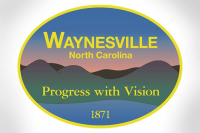Reasonable people can disagree on development ordinance
 By Clark Lipkin • Guest Columnist
By Clark Lipkin • Guest Columnist
I am the vice chairman of the Jackson County Planning Board. I presided over the public meeting to discuss the proposed revisions to the Mountain and Hillside Development Ordinance (MHDO) at last week’s Jackson County Planning Board meeting. I have some thoughts that I think are important to share with the public about that meeting, and about the proposed revisions. These thoughts are my own, and I do not speak for the planning board as a whole, or any other member of the board.
I think the biggest lesson I take from my experience on the board is how difficult it is to understand another person’s viewpoint. I saw a lot of people struggling with it at the public meeting. Many people who spoke failed to understand that two rational, honest people can have entirely different opinions about what’s best for Jackson County. Mature people know this, and then do two things: explain their position, and listen and attempt to understand what the “other side” has to say. People who can’t do this hurl threats and accusations of greed, corruption and ignorance at people whose opinions differ from their own. I saw both kinds of people that night.
Unfortunately, nobody spoke in support of the changes the board has proposed, so for those with an open mind, here goes.
First let me address the safety issue as it relates to changing the threshold of applicability for the MHDO. The planning board is proposing changing that threshold from land with an average slope of 30 percent to 35 percent (that’s percent slope, not degrees). Plenty of folks questioned the science, or lack of it, on this issue, and it’s a good question. In June of last year a team of geologists called Appalachian Landslide Consultants presented a report it had developed on landslides in Western North Carolina. They studied the relationship between 471 slides and the original slope of the land on which they occurred.
Related Items
I quote from that report: “It is interesting to note that very few landslides (modified or unmodified) occurred on slopes less than 20 degrees (36.4 percent).” Four, to be precise. Further, the majority of all modified slope failures occurred on slopes that had been modified well beyond the limits proposed by the planning board. The board also added benching requirements, as well as setbacks to make cuts more than 20-feet high safer.
Now, four slope failures is still too many, especially for the four affected landowners. But how low should we set the threshold? Note that, with enough rain and the wrong soil, there is no slope flat enough to guarantee safety. So we have to draw the line somewhere. The cost of dealing with the regulations and hiring a professional engineer to certify safety must be considered.
I am a professional land surveyor, and the most common type of subdivision of land that I do is not for big, gated golf course type developments. It is for a local family on a few acres who want to let a son or daughter have enough land for a home of their own. Their only choice is often to use the steeper land above the original homeplace. Typically they take advantage of a deal whereby they can get a doublewide with little or no money down if they own the land. These people often have difficulty coming up with the money to pay the permitting fees, the road builder, attorney, surveyor, etc. Adding the cost of hiring an engineer could literally break the deal.
I am not proposing that we sacrifice safety or environmental impact for these people. I am proposing that we make the MHDO threshold no higher than necessary to protect against a reasonable likelihood of landslide. Each landowner is ultimately responsible for the safety of their own home, and those under the regulatory threshold are still free to hire an engineer for their own peace of mind.
One of the most emotional issues brought up at the public hearing was to allow building up to 35 feet above protected ridges, and narrowing the definition of protected ridges. There is no safety reason to oppose this change.
I urge you to go online and look at some landslide hazard maps. They exist for Buncombe, Macon and other counties, with Jackson on the way (with the planning board’s urging). If you are familiar with how to read a topographic map, it will be obvious that some of the safest places are on the ridgetops. The ridgetops are less steep than the ridge sides. The ridgetops, or crests, are always less steep than the sides of the same ridges.
If a landowner is given the choice between building on top of the ridge or on the side of that same ridge, the site on top will be less steep, less damaging to the environment, and for buildings under 35 feet, less visible from the valley below. It’s probably time for a deep breath or two. I told you this would be difficult.
I have been fortunate in the 20 years that I have been a land surveyor here in Jackson County. I have met a lot of great people and seen a lot of beautiful places that very few other people get to see. I have also seen a lot of fancy homes built on ridge tops. I usually walk on to the back deck and check out the view. Then I drive off, and look for the house from the valley below. They tend to be hard to find. I have been looking for years, and it is my observation that most of the homes on high ridge tops can not be seen from the valley below. The most visible houses are on the sides of steep ridges, not the tops.
We had a building boom that recently ended, or perhaps paused, with no ridgetop restrictions.
So where are the ugly houses that mar the view of the ridges? I can give examples of ridge tops where you can’t see the houses, like up Big Ridge, or Tower Road where there are dozens of houses right near the Eastern Continental Divide. For all the worry, precious few actual examples of problem ridges outside of Boone have been offered. The Plott Balsams are probably the most visible high ridges in the northern half of the county. Their heights are mostly either government owned or in conservation easement. The planning board proposes keeping the provisio requiring 50 percent screening with natural vegetation.
If you know of a ridgetop in Jackson County that meets the criteria of the MHDO but that has ugly homes spoiling the view from the valley below, or that doesn’t but would be ruined if it did, please let the planning board know about it.
A valid question that was not asked at the public hearing was under what circumstances should rights that have traditionally been held by landowners of this county be taken away? In my humble opinion at least three criteria should be met. First, we should be certain that the regulation will have the desired effect. I have explained that I do not believe the current ridge provision does. Second, it should benefit the county as a whole. I do not claim to know enough about the economics of the home building trades versus the rest of the tourism industry, or the popular consensus, to decide that question. And third, it should happen only if there is no other reasonable option available.
Let me now propose another option. The county could identify the ridges most important to the aesthetic sensibilities of residents and the tourism industry that are not already owned by the U.S. Forest Service. The county could then purchase conservation easements on those properties. One major benefit this would have over the current ridge law is that the whole of the visible ridge could be protected, not just the top 50 feet or so. It would also be much more fair to the owners of those properties.
For six years now, Jackson County has had this MHDO, along with the Subdivision Ordinance, that the environmental community loves so well. We have had an erosion control ordinance for much longer. The county recently enacted, with recommendation from this board, an ordinance regulating impervious surfaces throughout the county, not just steep land. And yet the Tuckasegee runs brown all too often. I will grant that the numbers on the impervious surface limits should be revisited. But do not expect this ordinance, whether the revisions are adopted or not, to end this problem.
Clark Lipkin lives in Tuckasegee.









